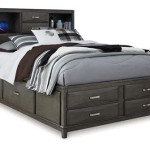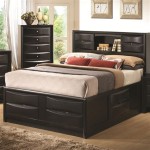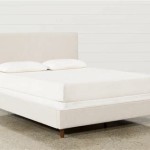How to Make a Vertical Wall Bed
A vertical wall bed, also known as a Murphy bed, is a space-saving solution perfect for small apartments, studios, or any room where maximizing floor space is a priority. These beds fold up and disappear into a wall cabinet when not in use, freeing up valuable space for other activities. Building a vertical wall bed can be a challenging but rewarding DIY project, offering a unique opportunity to customize your living space. This article will guide you step-by-step through the process, focusing on the essential stages, considerations, and tips for success.
1. Design and Planning: The Foundation of Your Wall Bed
Before diving into construction, meticulous planning is crucial for a successful vertical wall bed. This stage involves defining the bed's dimensions, material selection, and functional design. Consider the following factors:
- Space constraints: Measure the available wall space carefully, accounting for the necessary clearance for the bed to fold up and down, as well as the depth needed for storage compartments if desired.
- Bed size: Choose the bed size that fits your needs and space. Standard sizes include twin, full, queen, and king.
- Storage options: Decide if you want to incorporate shelves, drawers, or cabinets into the wall bed design for additional storage.
- Mechanism: Select a reliable lifting mechanism, such as a gas spring system, a piston mechanism, or a manual crank system. Consider the weight of the bed and your desired ease of operation.
- Material choice: Opt for durable and lightweight materials like plywood, MDF, or laminated boards for structural stability and ease of construction.
- Finish: Decide on the desired finish for the bed, such as paint, stain, or veneer, to complement the room's aesthetic.
Once you have a clear design plan, create detailed sketches or drawings to ensure all components are dimensionally accurate. This step guarantees a proper fit and avoids costly mistakes during construction.
2. Construction: Bringing Your Wall Bed to Life
With the design finalized, it's time to translate your plan into reality. This involves the following steps:
- Frame construction: Build the main frame of the wall bed using sturdy materials. Consider using plywood for the base and sides for strength and durability.
- Bed platform: Construct the platform for the mattress using plywood or slats. Ensure the platform is sturdy enough to support the weight of the mattress and occupants.
- Storage compartments: Incorporate storage compartments if desired by constructing shelves, drawers, or cabinets.
- Lifting mechanism installation: Carefully install the chosen lifting mechanism according to the manufacturer's instructions. Ensure proper alignment and tension for smooth operation.
- Cabinet construction: Build a cabinet to enclose the bed when folded. Choose material and finish that complements the overall design.
- Hardware installation: Install hinges, latches, handles, and other hardware necessary for proper function and aesthetics.
- Finish and decoration: Apply the chosen surface finish, such as paint or stain, and add decorative touches to match the room's décor.
Throughout the construction process, prioritize precision and accuracy. Double-check measurements, use appropriate tools, and ensure all components are securely fastened to avoid instability and safety hazards.
3. Installation and Safety: Securing Your Wall Bed
Once the wall bed is constructed, the final step is to install it securely to the wall and test its operation. This process requires careful attention to safety considerations:
- Wall preparation: Ensure that the wall is strong enough to support the weight of the wall bed. Consider using wall anchors or reinforcing the wall with additional studs if necessary.
- Wall mounting: Securely attach the wall bed to the wall using sturdy brackets or mounting hardware. Ensure the bed is securely fastened to prevent it from falling during use.
- Functionality testing: Thoroughly test the bed's operation to ensure smooth folding and unfolding. Adjust the mechanism if needed to ensure smooth operation.
- Safety inspection: Conduct a final safety inspection, checking for any loose or damaged components. Address any issues found to ensure safe and reliable operation.
Investing in a vertical wall bed can dramatically transform a small space, making it more functional and visually appealing. Although building a vertical wall bed requires time, effort, and meticulous attention to detail, the final product provides a practical and personalized solution to enhance your living environment.

Vertical Murphy Bed Kit

Create A Bed Deluxe Vertical Murphy Construction Assembly Installation

Create A Bed Queen Vertical Adjustable Deluxe Murphy Wall Kit Van Dyke S Rers

Step By Guide Building A Murphy Bed With Folding Table Eightify

Create A Bed Twin Vertical Adjustable Deluxe Murphy Wall Kit Van Dyke S Rers

Murphy Bed Queen Size Hardware Kit Diy Wood Frame Folding Cabinet Wall For Guestroom Easy To Build Made In Usa

Create A Bed Murphy Mechanisms

Bedroom Vertical Slat Wall Taryn Whiteaker Designs

Full Double Size Murphy Bed Hardware Kit Vertical Upright Easy Diy

Diy Murphy Bed Hardware Kits For Lift Stor Beds Plans
Related Posts







